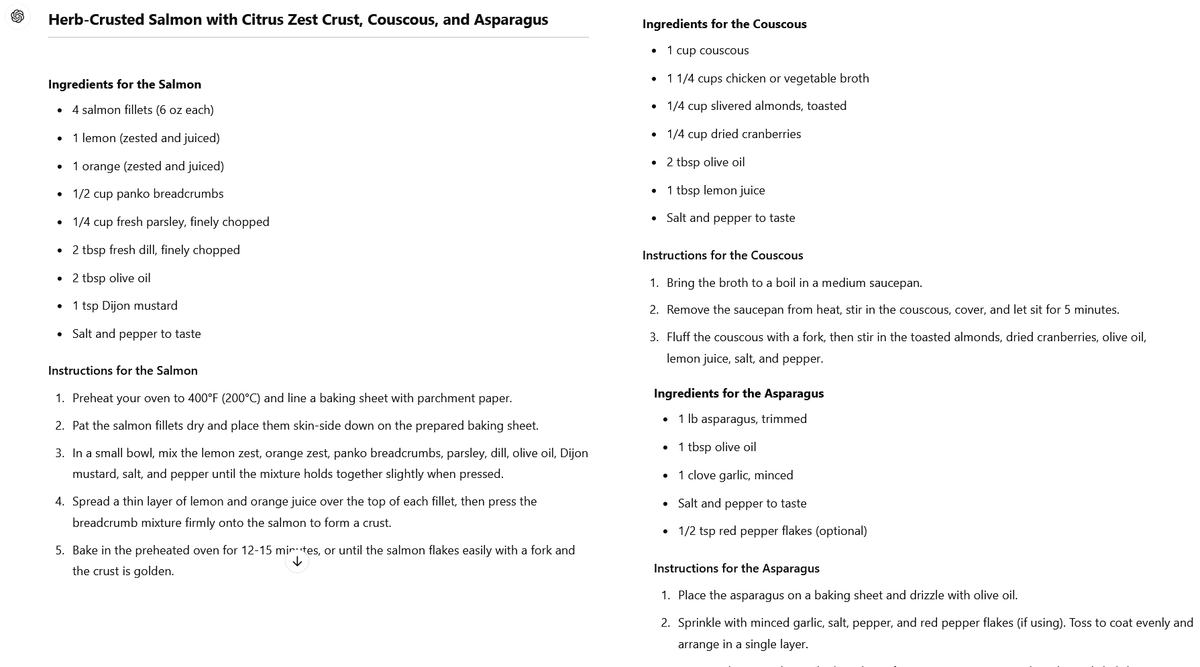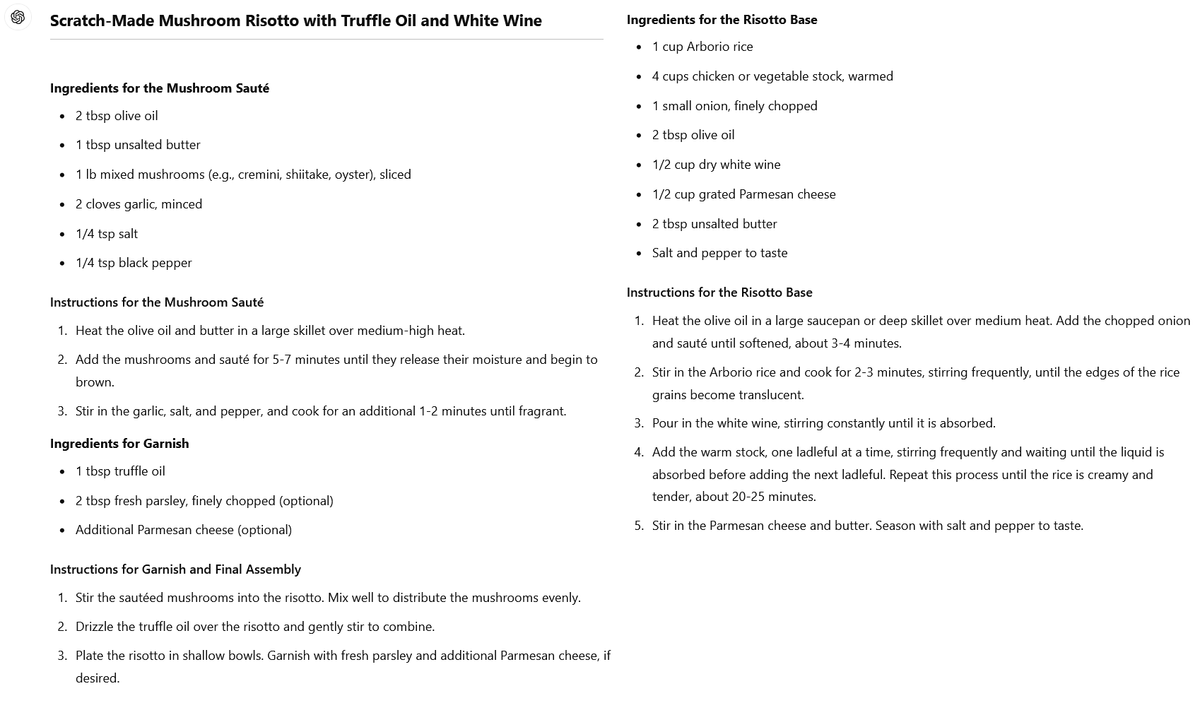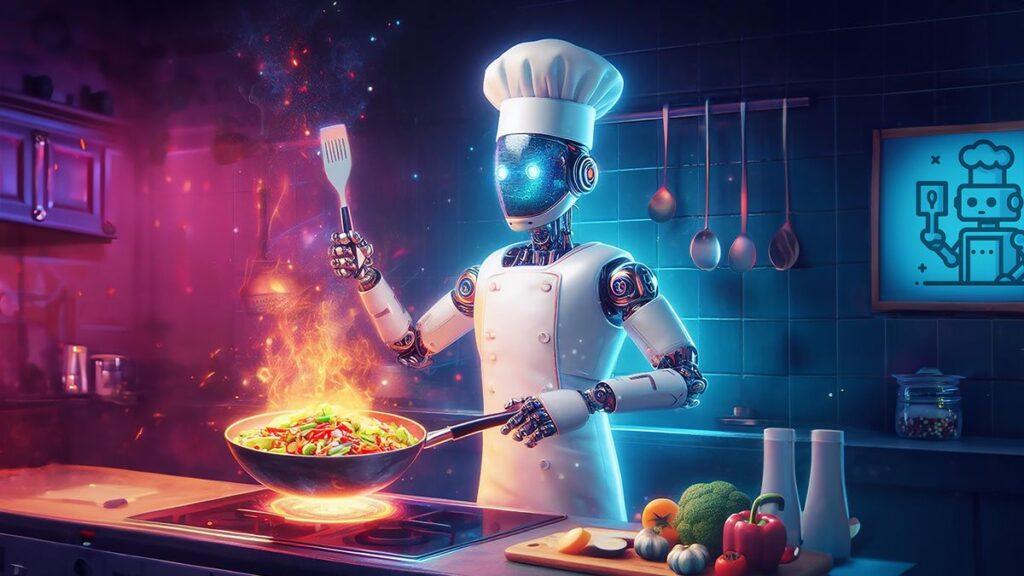Experimenting with AI has become a hobby for me, as well as a professional role. I’ve used AI for quick recipe inspiration before, but this time I wanted to see if I could handle a week of dinners tailored to my cooking time, whether for my wife and I or just for me. I know cooking even if my talents are far below those of my wife (whose family once showed off their skills on a TV show). Still, I was impressed by how AI, in this case ChatGPT, opened some delicious new culinary doors, albeit with more than one tripwire to watch out for when crossing. Here’s how my AI sous chef performed and how you can do the same without any of the disasters I faced.
AI Meal Prep
I wanted to prepare the entire week before starting, so I could do the shopping all at once. I talked to the AI about some of my tastes and what my wife and I liked. We keep kosher, so I made sure to emphasize that, which meant making it clear that recipes couldn’t include ingredients like pork and seafood, couldn’t combine meat with dairy, etc.
I started by giving relatively specific recipe prompts to see how ChatGPT would work with narrow parameters before simply asking for ideas without any specific requests. The AI did well to come up with a kosher dinner recipe for two with chicken and a vegetarian recipe with rice and seasonal vegetables. As an additional experiment, I even uploaded images of recipe books for visual reference. The AI impressed me with its adaptability, suggesting dishes like herb-roasted chicken with carrots and glazed potatoes and rice-stuffed peppers with spicy tomato sauce.
Without being asked, the chatbot even showed what it thought the meals would look like on the plate. They were mostly appetizing, although sometimes the details were a little off, like when it was hard to tell the chicken and carrots apart.
Virtual Michelin stars

The AI turns out to be pretty good at preparing a week’s worth of meals. The recipe for herb-crusted salmon, couscous and asparagus was delicious. I had never tried making a citrus zest crust, but the instructions were clear and we ended up devouring the whole thing. On a single night, the AI guided me through preparing chicken shawarma wraps with tahini sauce and Israeli salad. The chatbot enhanced my experience with some cooking and spice suggestions that kept me warm even when it was snowing outside.
Probably the most successful dish was the homemade mushroom risotto. I’d tell it at the end of my cooking technique, but the meticulous detail allowed me to go through the laborious process without interruption, while the truffle oil and white wine made the dish seem much more elegant than it was. Those kinds of small adjustments throughout the week made doing the dishes afterward seem like less of a chore.
Luckily, another night it was a basic dish of roasted vegetables with hummus and other dips, so I wasn’t totally exhausted every night. It’s not that these recipes were hard to find on their own or in many cookbooks, but the AI made the process seem personalized to my preferences and general schedule.
kitchen nightmares
I committed to following every recipe ChatGPT gave me (barring obvious poisons), but that almost led me to abort the entire experiment on the second day when my inexperience led to a disastrous sweet potato curry. The description of a hearty, spicy dish sounded great, but I ignored that the recipe called for too much garam masala and cayenne. It seemed like a lot even to me at the time, but the success of the fish numbed me and I followed it. I like spice, but after one bite, my taste buds went off and I couldn’t speak for hours. It may have been fine after removing the sauce, but the cooking time for the sweet potatoes was also poor. Biting into released potato fragments scraped my mouth just in time for the cayenne to really get in there.
I recovered and everything seemed fine until the last night, when I thought a dairy-free baked ziti sounded easy and fun. Apparently, the AI didn’t understand how plant-based cheeses behave when baked. The result was a grainy, unappetizing texture that made the entire dish seem like a chore to eat. To add to the disappointment, the AI recommended mixing the marinara sauce with nutritional yeast, which created a bland and strangely bitter flavor profile. It looked good coming out of the oven, but that first bite was all I needed to know it was a failure.
Leftovers

The experiment solidified some of my opinions about AI in the kitchen, for better and worse. The way AI is now, you can definitely benefit from employing it to help you. But only as help, not as the last word. Clear, detailed directions are crucial if you have a specific idea of the type of dish you want. But don’t throw away your recipe books. AI does not replace human chefs who create a menu. You can and should trust your instincts and make adjustments if you think it makes sense. Maybe cut back on cayenne or find the best way to use substitute ingredients. Still, for culinary inspiration and testing, you could do worse than don a chef’s hat on ChatGPT.




